This article was co-authored by David Nazarian, MD. Dr. David Nazarian is a board certified Internal Medicine Physician and the Owner of My Concierge MD, a medical practice in Beverly Hills California, specializing in concierge medicine, executive health and integrative medicine. Dr. Nazarian specializes in comprehensive physical examinations, IV Vitamin therapies, hormone replacement therapy, weight loss, platelet rich plasma therapies. He has over 16 years of medical training and facilitation and is a Diplomate of the American Board of Internal Medicine. He completed his B.S. in Psychology and Biology from the University of California, Los Angeles, his M.D. from the Sackler School of Medicine, and a residency at Huntington Memorial Hospital, an affiliate of the University of Southern California.
There are 10 references cited in this article, which can be found at the bottom of the page.
This article has been viewed 97,204 times.
A fever is a common symptom of illness; it shows by a raised temperature and may result in discomfort or dehydration. People typically think of fevers as being above 98.6 degrees Fahrenheit (37 degrees Celsius), but a normal body temperature can vary with age, time of day, activity level, hormones, and other factors. Fevers normally pass with time and help the body fight infection, but a fever itself can become dangerous if it rises to a high temperature. If you have a fever, or are caring for someone who has a fever, this article provides information and advice about how you can diagnose and, if necessary, treat the fever.
Steps
Treating a Fever in an Adult
-
1Let the fever run its course. A fever itself is not necessarily unhealthy. It's not an illness; it's a physiological response to something else. Your body will often react to sickness or infection with a fever; it is a defensive response by your immune system as it tries to rid the body of pyrogens (fever-producing substances).[1]
- Acting too quickly to treat your fever can, counterintuitively, harm your body by undercutting one of its defensive measures.
- Rather than treating your fever immediately, continue to take your temperature and monitor your symptoms. The fever will probably subside in time.
-
2Take ibuprofen or acetaminophen for any discomfort. Having a fever can sometimes cause headaches, as well as joint and muscle pain. If your fever symptoms are uncomfortable, you can alleviate them with ibuprofen (Motrin) or acetaminophen (Tylenol).[2]
- Avoid giving aspirin for a fever, especially if you are dealing with a sick child.[3] Aspirin can have harmful side effects for anyone under the age of 18.
- Aspirin is generally more likely than ibuprofen or acetaminophen to cause gastrointestinal side effects.
- Never give aspirin to a child. It can cause a potentially life-threatening condition called Reyes Syndrome.
Advertisement -
3Rest as much as possible. This is the best forms of fever treatment; further exertion will likely cause the fever—and the infection or illness that caused the fever in the first place—to worsen.[4]
- Wear light clothing to keep your body cool. You should avoid raising your body temperature any higher than it already is, especially if it is summer or you live in a warm climate.
- Sleep when you can, under only a sheet or light blanket. Often the discomfort of a fever makes it difficult to sleep at night. Any sleep will help your body; take naps during the day, and sleep when you can at night.
-
4Hydrate your body by drinking water. Along with resting, you must hydrate your body when it is feverish. Fevers often cause the body to sweat, which expels fluids from the body. To compensate for these lost fluids, drink plenty of water.[5]
- Although children may prefer to drink soda or juice, these fluids are not as helpful in staying hydrated. However, if your feverish child will only drink soda or juice, it’s better than nothing.
- Coffee and tea are also not as effective as water.
-
5Bathe yourself in lukewarm water. Immersing your body in lukewarm water will cool off your skin and may alleviate discomfort from the fever.[6]
- Don't submerge yourself for too long; you want to give your body a chance to release heat through evaporation.
- Do not take an ice bath; the water temperature should be around 85 °F.
- If you are caring for a feverish child, try sponging them or wiping their skin with a damp sponge or a wet washcloth.
Treating a Child’s Fever
-
1Monitor the fever closely. As is the case with a fevered adult, a fever usually indicates that your child’s body is raising its own temperature to fight off a sickness or infection. However, because children’s bodies are smaller and often have weaker immune systems, there are certain precautions to take when you are dealing with a feverish child.[7]
- Continue to take your child’s temperature (at least every couple of hours), either rectally, orally, or in their ear or armpit.
- If your child is under 36 months old, the rectal temperature is the means of measurement recommended by doctors.
-
2Take infants (under 3 months) to a doctor if a fever over 100.4 °F persists. Although in children and adults, a low-grade fever is nothing to worry about, it can be harmful to infants.[8]
- If you have a baby 3–6 months of age with a temperature of 100.4 °F or higher, take him or her see a doctor, even if the child has no other observable symptoms.
- Once your child is older than 6 months, you don’t need to be concerned unless her fever reaches 103 °F.
-
3Keep your child hydrated. Just like for fevers in adults, you need to make sure your child consumes plenty of fluids—primarily water—to replenish the fluids that they lose through sweat.[9]
- Although children may prefer to drink soda or juice, these fluids are not as helpful in staying hydrated. However, if your feverish child will only drink soda or juice, it’s better than nothing.
-
4Wipe your child’s skin with a wet washcloth. The washcloth (or sponge) should be lukewarm, not ice-cold. Ice cold water will cause your child to shiver, which will combat your intent by raising their temperature.[10]
- Do not give your child an ice bath or insist that they take a cold shower.
-
5Administer ibuprofen if your child feels discomfort. Ibuprofen is safe for children of any age, and should reduce the aches and chills that are often associated with fevers.[11]
- Acetaminophen may also be useful for symptoms of a fever.
- Remember to dose a child's dose of ibuprofen or acetaminophen by their weight.
- Avoid giving aspirin for a fever.[12] Aspirin can have harmful side effects for anyone under the age of 18.
Seeking Medical Help for a Severe Fever
-
1Keep track of how long the fever has lasted and its peak temperature. Normally, a fever will break and subside after a day or two. If the fever has lasted more than three days, you may need medical attention.[13]
- If your peak temperature rises over 102 °F, the fever has become severe.
-
2Note any severe symptoms. Although a fever is typically a sign of the body trying to get rid of a virus or infection, severe and painful symptoms can indicate complicated medical problems. These should not be dealt with using fever-remedy methods. Contact your doctor immediately if you have a fever and experience:[14]
- Confusion or trouble staying awake.
- Severe lower abdominal pain.
- Blisters or rashes on your skin.
-
3Call your doctor. Severe, long-lasting fevers should not be treated from home; your doctor may want to put you on an IV to keep you hydrated or prescribe another treatment. If you have a severe fever, your doctor may even send you to the emergency room.[15]
- Even if the fever has not reached 102 °F and has not lasted multiple days, you should still call you doctor if you are experiencing unexpected symptoms.
- It's important that you talk to your doctor since your fever may be from an infection that requires treatment.[16]
-
4Prevent future fevers. The best way to avoid having a serious fever again in the future is to avoid the illness or infection that lead to the fever in the first place. You can do this by:[17]
- Staying up to date on your immunizations.
- Avoid contact with ill people, and wash your hands.
References
- ↑ https://www.hopkinsmedicine.org/health/conditions-and-diseases/fever
- ↑ https://my.clevelandclinic.org/health/symptoms/10880-fever
- ↑ https://medlineplus.gov/druginfo/meds/a682878.html
- ↑ https://www.betterhealth.vic.gov.au/health/conditionsandtreatments/fever
- ↑ https://www.betterhealth.vic.gov.au/health/conditionsandtreatments/fever
- ↑ https://my.clevelandclinic.org/health/symptoms/10880-fever
- ↑ https://www.stanfordchildrens.org/en/topic/default?id=fever-in-children-90-P02512
- ↑ https://medlineplus.gov/ency/patientinstructions/000319.htm
- ↑ https://www.stanfordchildrens.org/en/topic/default?id=fever-in-children-90-P02512
- ↑ https://www.uhhospitals.org/Healthy-at-UH/articles/2015/03/the-dos-and-donts-of-treating-fevers-in-children
- ↑ https://www.uhhospitals.org/Healthy-at-UH/articles/2015/03/the-dos-and-donts-of-treating-fevers-in-children
- ↑ https://medlineplus.gov/druginfo/meds/a682878.html
- ↑ https://my.clevelandclinic.org/health/symptoms/10880-fever
- ↑ https://www.health.harvard.edu/staying-healthy/treating-fever-in-adults
- ↑ https://my.clevelandclinic.org/health/symptoms/10880-fever
- ↑ David Nazarian, MD. Diplomate, American Board of Internal Medicine. Expert Interview. 26 March 2020.
- ↑ https://www.chop.edu/centers-programs/vaccine-education-center/vaccine-safety/fever-and-vaccines
About This Article
To treat a fever, try to rest as much as possible, since exerting yourself may cause the fever to get worse. For relief from headaches or muscle pain, take an over-the-counter pain killer such as Motrin or Tylenol. You can also try taking a lukewarm bath, which will cool your skin and alleviate some discomfort. Additionally, drink plenty of water to replenish your fluids and avoid dehydration. However, make sure to call your doctor if your fever lasts for more than 3 days, or if you experience symptoms, like blisters or abdominal pain. For tips on how to soothe a child who has a fever, keep reading.
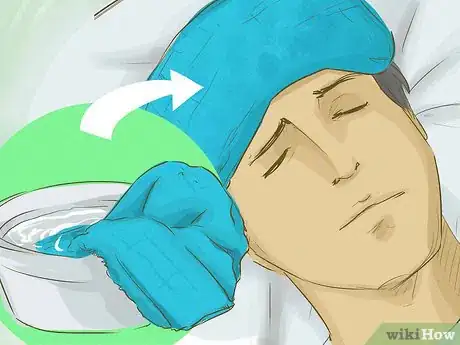
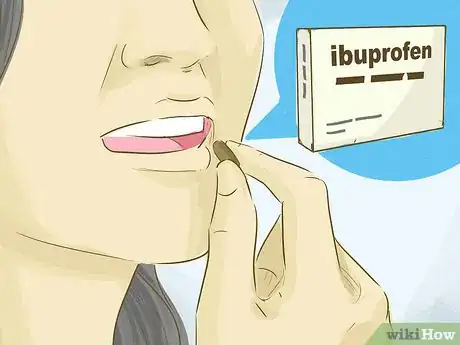

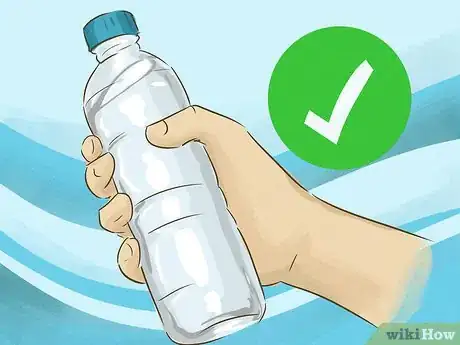

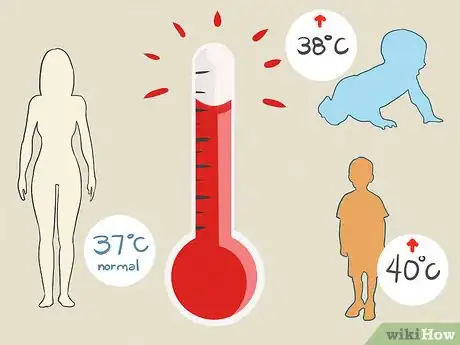


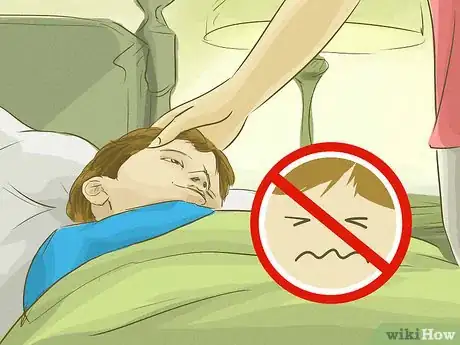
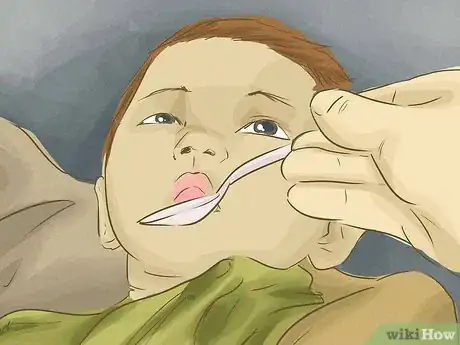
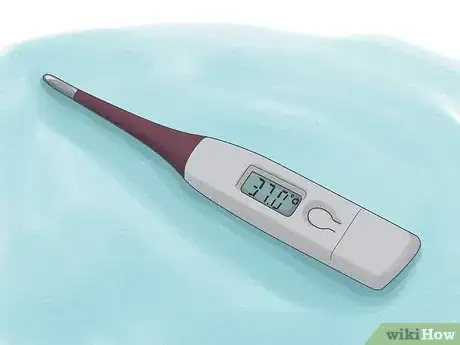



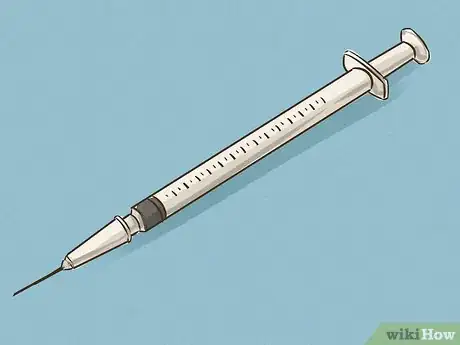
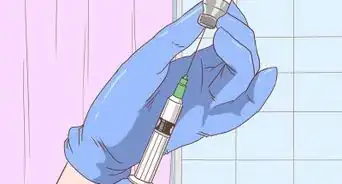





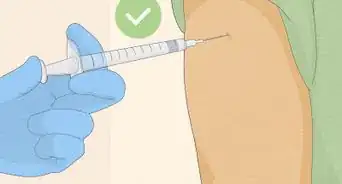
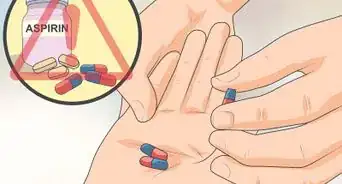
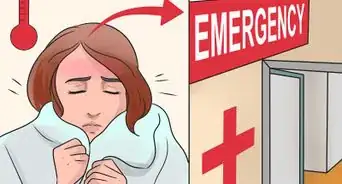












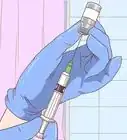






































Medical Disclaimer
The content of this article is not intended to be a substitute for professional medical advice, examination, diagnosis, or treatment. You should always contact your doctor or other qualified healthcare professional before starting, changing, or stopping any kind of health treatment.
Read More...